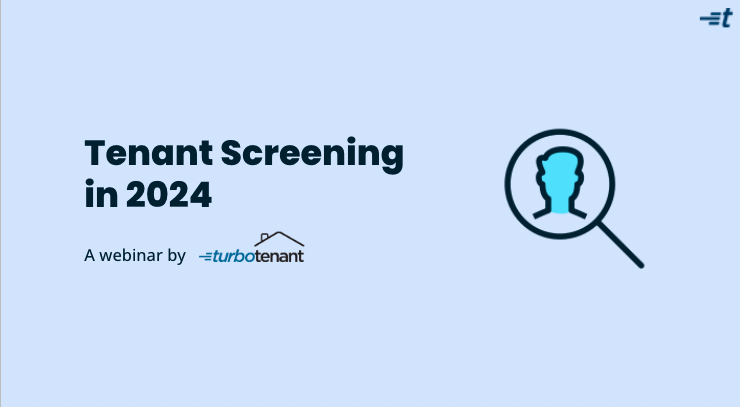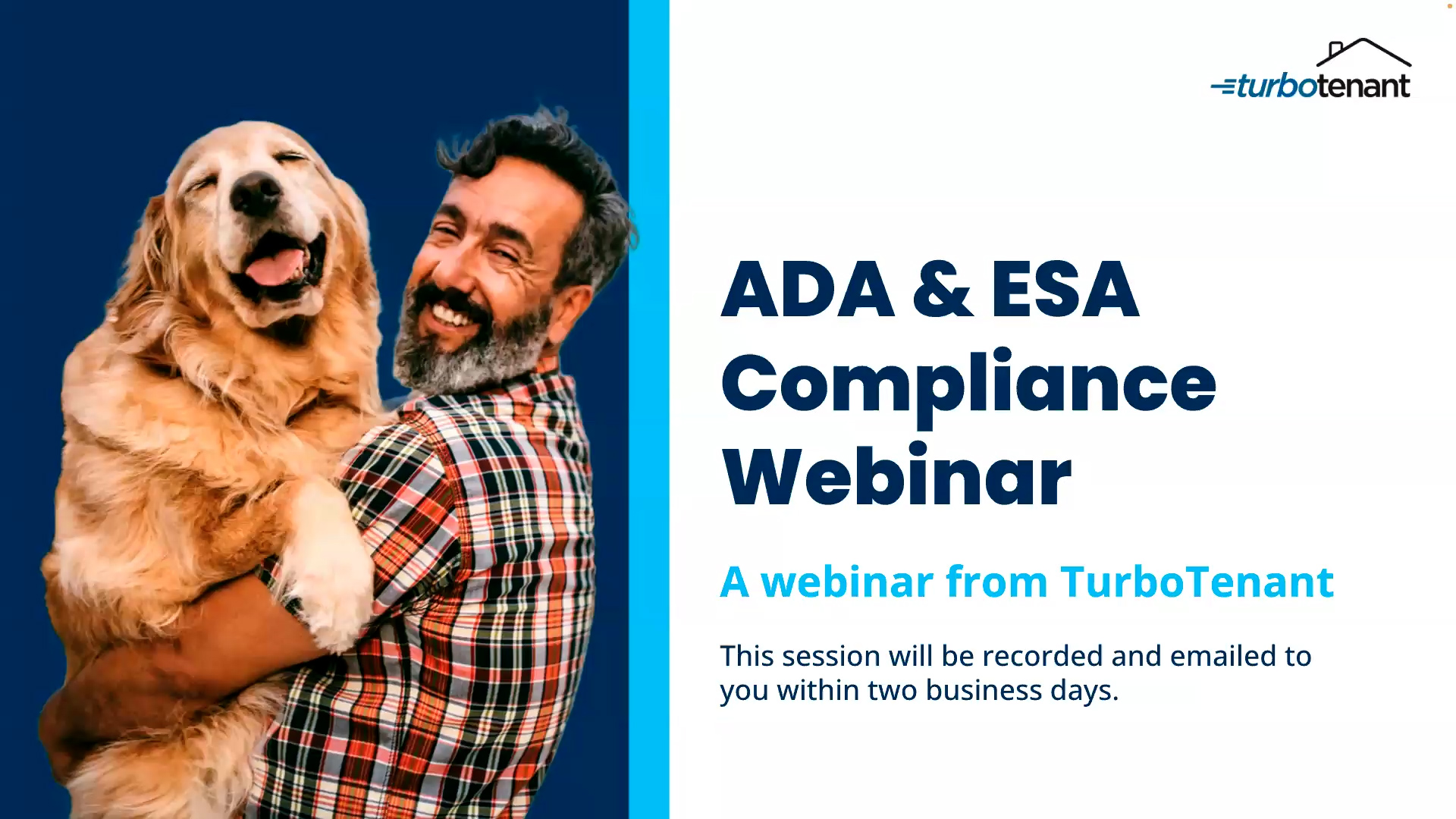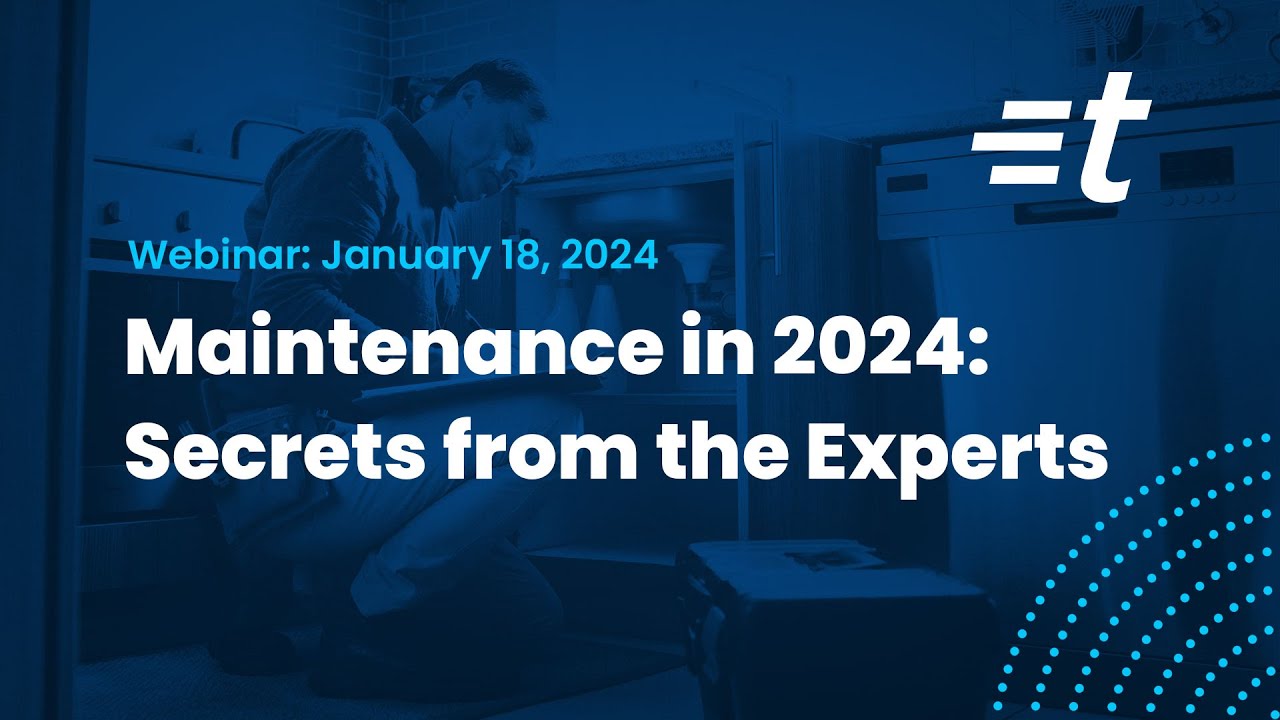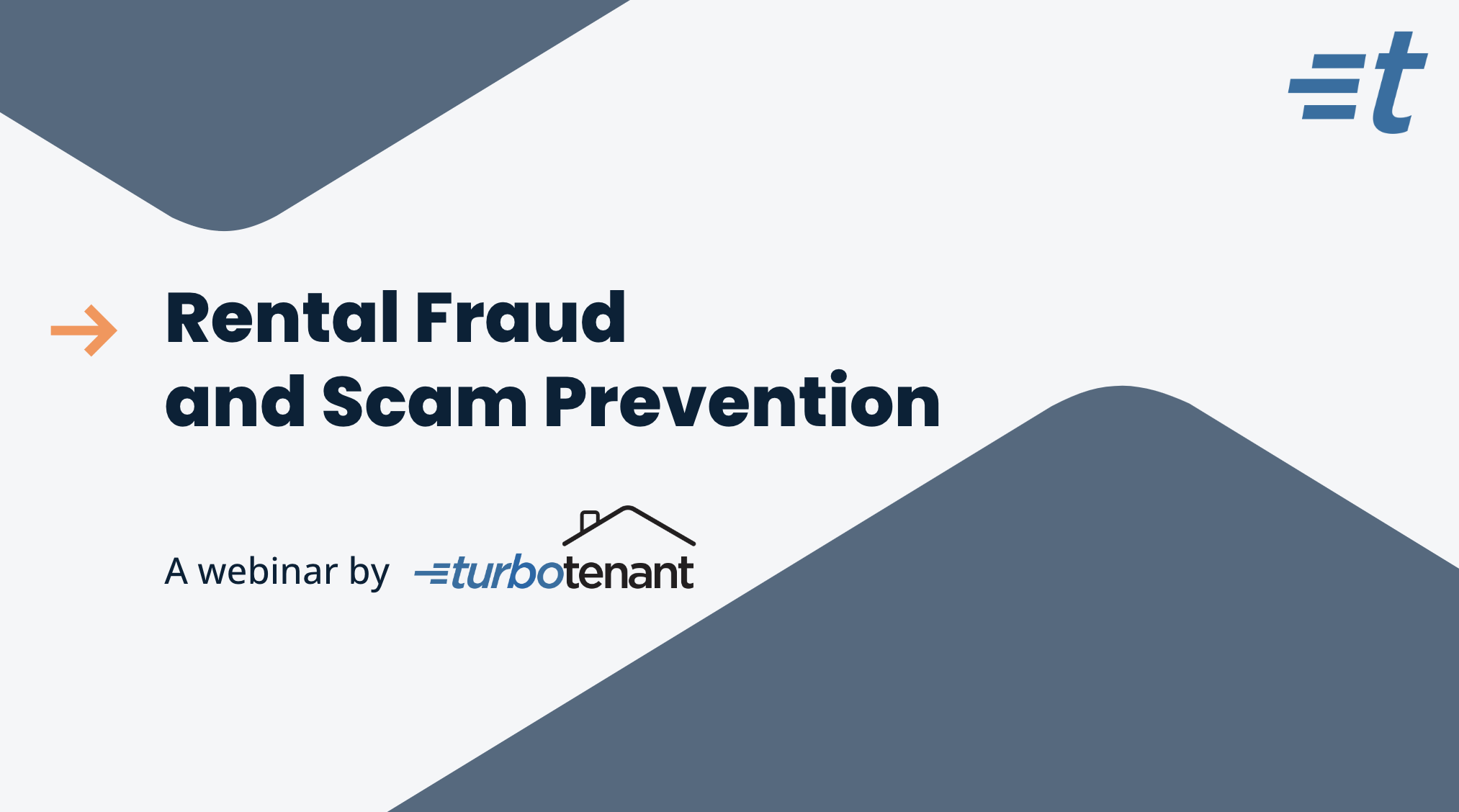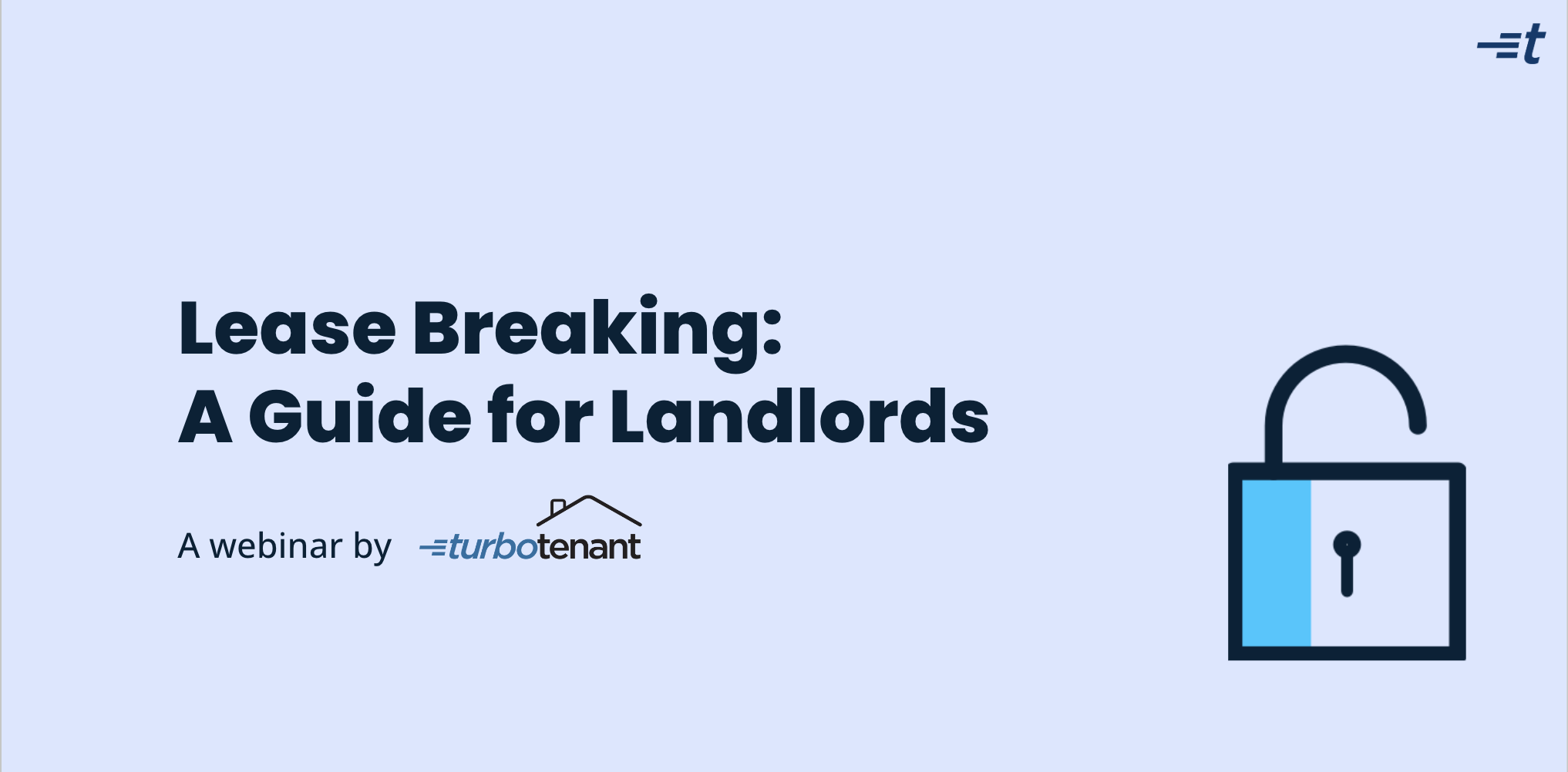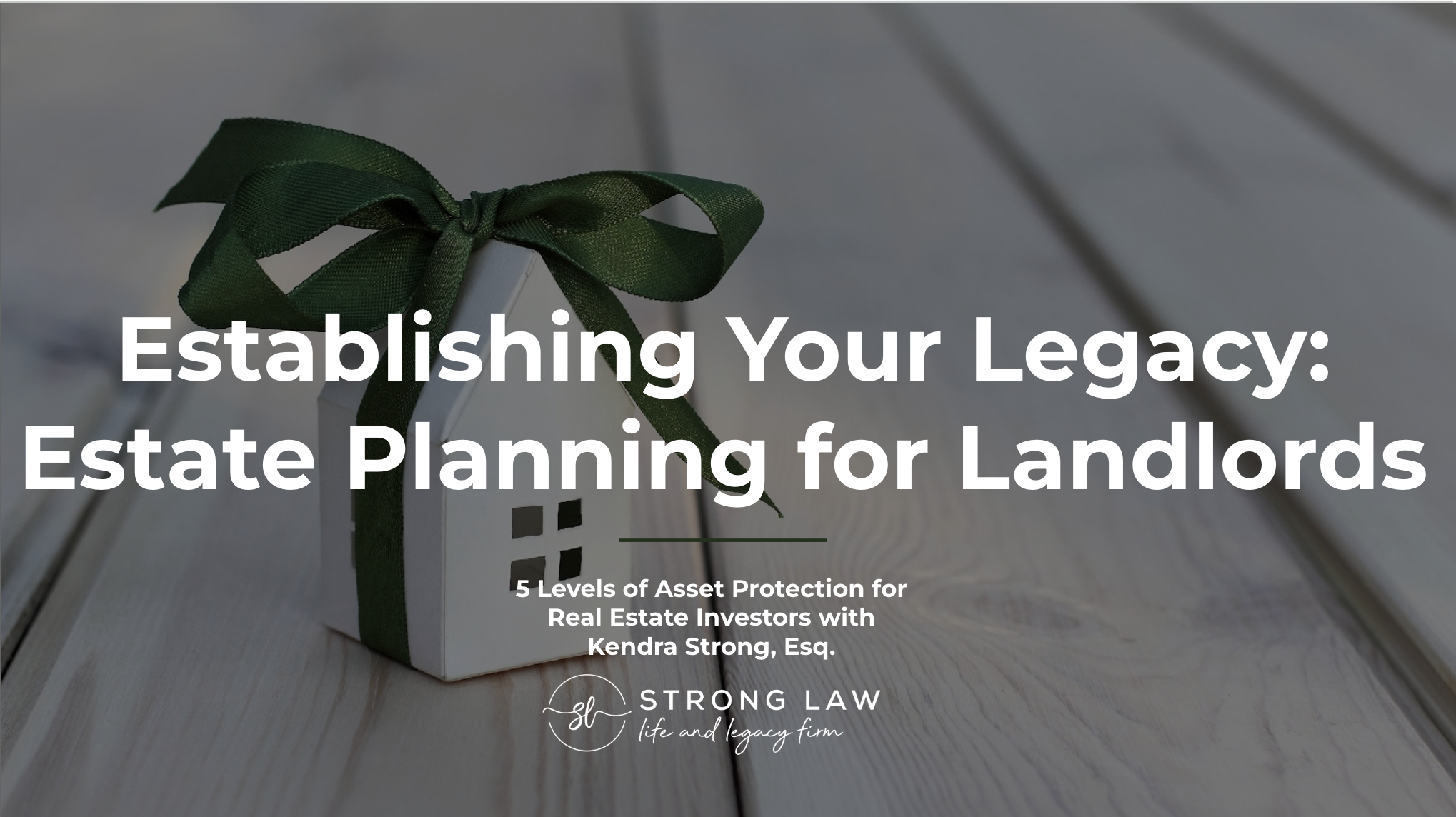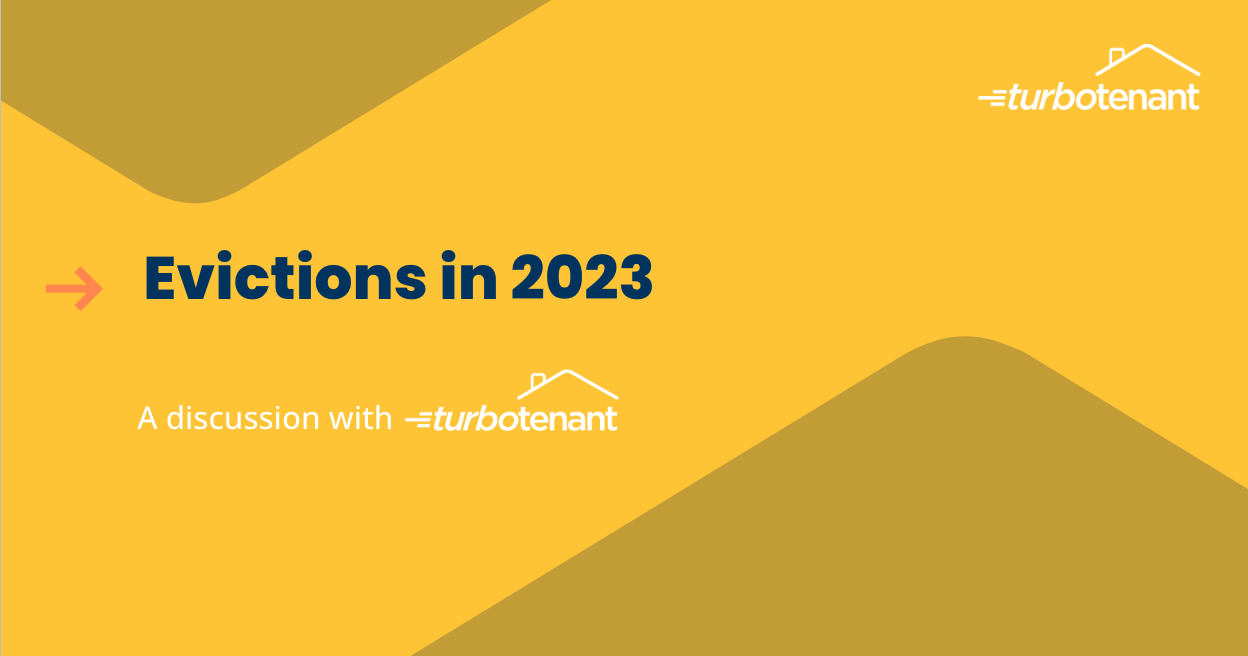Section 8 + HCV Programs Webinar
In this webinar, we dive into the intricacies of the Section 8 and Housing Choice Voucher programs for 2023. We explore the necessity of affordable housing, eligibility criteria, program benefits and drawbacks, and frequently asked questions.
Key Takeaways
- Understanding Legal and Regulatory Frameworks: Emphasis on the importance of understanding local regulations that affect Section 8 rentals, including anti-discrimination laws related to source of income.
- Navigating Section 8 Logistics: Insight into the logistical aspects of the Section 8 program, such as the inspection requirements, tenant screening processes, and financial arrangements between landlords, tenants, and public housing agencies.
- Debunking Stereotypes: Efforts to clarify stereotypes and encourage respectful treatment of all tenants, highlighting that many Section 8 tenants are reliable and long-term residents who contribute positively to properties.
Transcript ▼
Krista Reuther:
Hello, hello. We have our Section 8 and Housing Choice Voucher programs in 2023 talk going on. This is, of course, a webinar from us, your friends at TurboTenant. We’re going to go over these programs along with other key pieces of information that you should know. At the very jump of it, I need you to know we will be sending out a copy of this recording and the deck itself so that you can peruse at your leisure. Make sure that you are asking questions either through the Q&A or through the chat. We will continue keeping an eye on both.
Samantha Yadav is a champion at picking out those comments. So that is what we will look to do. We will have places to pause throughout the presentation. So feel free to keep them coming for as long as we are chit-chatting. With that in mind, Samantha, what are we talking about today?
Samantha Yadav:
Yeah, so our key areas of focus for today, we’re going to talk about the need for affordable housing, the different types of housing programs, eligibility and demographics, as well as the benefits and drawbacks and we’ll wrap up with FAQs. I do want to make a note on the chat asking questions. There are a lot of us here today and so questions can get lost in the chat. So with that, we do have that Q&A button which will help me be a little bit more organized on my side to make sure that we get your questions answered so they’re not just lost in all the comments there in the chat.
Krista Reuther:
Fantastic note. So yes, please use the Q&A function that will help us keep organized and has a better chance of getting your question answered. So I’m going to start off with Richard. Use the chat to keep chatting away with us and we will go ahead and jump in.
My name is Krista Reuther. I am our senior content marketing writer, and we’re going to start off with why we talk about Section 8 housing. So this is something that I am very passionate about, right, because I know that there is a significant need for affordable housing across the US. In fact, no state actually has an adequate supply of affordable housing for the lowest income renters. So we are short nationally over 7 million units.
That’s a lot to try and make up. Also, these figures are coming from the National Low Income Housing Coalition, and this is from a report in March. So it’s up to date.
And we know that there is a real need, not only for affordable housing but also to make sure that people know that this affordable housing exists. Let’s take a look at some of the impacts here with a quick chart or two. So as you can see, the states where they are, excuse me, redder, that is going to be on the better end. So we’re looking at this saying, okay, there are fewer, or excuse me, let’s take a half step back.
I had some coffee this morning, so I’m a little caffeinated. Red means that there are fewer units. The lighter color means that there are more so the darker the state, the more extreme the situation is in regards to affordable housing.
So again, you can see my home state here, Colorado, not doing super well. There are 30 or fewer available rental houses per 100 extremely low-income folks. That is pretty rough.
So extremely low income just so that we’re all on the same page means people with incomes at or below the federal poverty line, or about 30% of their area median income, whichever is greater. So, unfortunately, with the map looking like this, you can see things are looking rough, especially out west and down south in Florida. And the problem gets worse over time. So this little chart shows you income and then how their cost burden changes over the years. So if the orange gets bigger, it’s worse is the easiest way to sum up this graph.
And unfortunately, it does. So I have this crop so we can see all of the incomes below $75,000. And as people earn more, they are less severely burdened. That makes sense. But unfortunately, for folks who are in the lowest income brackets, their burden only increases.
That’s a really hard thing to get out of. Out of curiosity. Before we continue on, I want to know what you guys think is the state with the highest number of extremely low-income renters. So tell us in the chat which state you think has the highest income of extremely low-income renter households. I’ll be sure to tell you, but I’d love to see what you guys are thinking.
Samantha Yadav:
Looks like we got a lot of Californias so far, Texas, Louisiana, California, California, California, California, Arkansas, Texas, New York, California, California, Ohio. Okay.
Krista Reuther:
Yeah, you guys are right on track. So California does have the highest number of extremely low-income households. They have over 1,000,000, yeah, 1,300,000. Then comes New York and then Texas. So those are our top three with the most extremely low-income renter households. Conversely, Wyoming actually has the least.
They only have 17,417 extremely low-income households. Interesting. Makes sense based on where we know the population density really coagulates, is the word my brain has given me.
We’re going to go with it. So something else to keep in mind as we’re looking over these figures overall median monthly rent increased 3% from 2019 to 2021. So that’s obviously the period leading into and through COVID. But the median renter income fell by 2% during that time so that helps to contribute to this burden shifting and growing over that period of time. That was specifically exaggerated for people earning less than $30,000 because their rents rose 5% and incomes fell by 6% during that period.
So very bad news, hard to get out of. That’s why we’re going to go ahead and talk about Section 8 and other housing programs today. Because it pays to be aware of it, even if you don’t want to join. And if you don’t want to join, let’s figure out why maybe it’s because you need more information.
Maybe it’s because you’ve heard some really bad stories. But it makes sense to go through and actually understand it from the ground up to see if it’s the right choice for you and your business. When we talk about Section 8 housing, of course, we’re also going to talk about the laws regarding source of income discrimination. If you’re unfamiliar, source of income discrimination is protected under some localities and states. Similarly to the Fair Housing classes. In fact, it becomes one of the Fair Housing classes in those localities. This means that you can’t discriminate against someone based on how they earn their money or how they pay their rent. So, in other words, you can’t deny someone for using a Housing Choice Voucher or a Section 8 voucher. If you are in one of these states in either blue or dark blue. These are all the places that have laws currently, although always always make sure that you are checking your local landlord state laws to ensure that you are up to date and compliant when you are doing your business, but this graph is from May 2023.
So pretty up to date. With that in mind, there are also obviously places where you don’t have to accept Section 8 applicants or you could, in theory, turn someone away because of their source of income. However, when in doubt, follow your local Fair Housing laws to make sure that you are not going to get in any kind of trouble. All right. So, let’s get to it. Should every landlord participate in assisted housing programs? The answer is no, right there is this issue there are a lot of discussions we could have about affordable housing and the crisis that comes with it. But that doesn’t mean that every landlord is predisposed or really should be jumping into this kind of work. So if you are uncomfortable waiting at least a month for the government’s first subsidy check to come through, if you’re hesitant to charge market rent or to keep your property at a rent that you do not specifically control.
Or even if you typically vote against government subsidy programs. This is probably not the way that your business should go. You should probably not jump into public housing. It’s a recipe for disaster especially if you don’t have the wiggle room in your budget to wait a little bit for that first check we’ll explain why that happens down the line. But if you don’t have the space and you jump in because you want to help people out, you’re going to end up running your business to the ground and you won’t be able to help folks. So really take this into account as you make the decision, whether or not to participate, because it’s not for everyone. Also, before I scooch on, I will be giving all of you here a downloadable in the follow-up email after this so you’ll get this deck the recording of us chatting to the topic, and also to exclusive downloadables to say thank you for attending live.
One of them is a decision tree to help you decide if Section 8 housing or public housing is right for your rental business. So keep an eye on your emails. I’m very excited to get that over to you.
Moving right along and the subject of another downloadable because it is such a big question. How do you reject Section 8 applicants? There are a couple of different ways to go about this.
So first of all, like you’re looking at the graph. There are some cities and states where you cannot discriminate against people based on their source of income. So that means you cannot put in your marketing and your listing description, no Section 8 applicants or things of that nature, right.
You want to play it very carefully to make sure that you are not discriminating against anyone. With that said, you don’t have to accept every prospective tenant who has a Section 8 voucher, and you should and can’t like can and should screen them as you would any other tenant. So if they have a low credit score or if there’s a problematic criminal background check for like anything that you would pass over a typical tenant or typical applicant, then you can go ahead and reject them. Just make sure that you are not making the screening process any harder or costlier for Section 8 applicants, or you’ll risk a fair housing violation.
Also having specific defined tenant criteria like earning three times the amount of monthly rent and holding all applicants to that standard. That’s going to reduce the likelihood that you have someone who’s able to meet that standard if you are worried about joining the Section 8 program. So just make sure key takeaway that you are following the same process for a Section 8 applicant as you would for anybody else, and you will be okay in a state that has source of income discrimination laws.
If you are in a state without those laws. Then I would say one easiest way to avoid having applicants is to avoid submitting your property for the program approval we’ll go through what you have to do in order to be approved for the Section 8 housing program. But you do not have to join in the states especially it’s it is optional, so don’t join in and you are a okay. Otherwise, again, maintain specific tenant screening criteria apply it to all applicants, and there’s a likelihood that somebody coming in with a Section 8 voucher is not going to be able to meet your standards.
So, thus, you would find someone who better aligns with your criteria and move on. Okay. I’m going to pause I know I threw a ton of information at you. Before we hop into the different types of public housing programs and why I keep talking specifically about Section 8. Are there any questions we can tackle right now?
Samantha Yadav:
There are so many questions that are coming in in the Q&A I know a lot of these are going to be answered later in the presentation. So I’ve just picked a couple. The first is that someone is asking if there is a direct link between the Section 8 program and TurboTenant. And no, there is not. TurboTenant is landlord software so we are empowering landlords to create welcome rental experiences with our landlord software to help you manage your rentals and a lot of things that come up from our landlords asking questions are related to Section 8 and so that’s the purpose of us having these webinars the Section 8 webinar.
There is a way in TurboTenant to record offline payments as well as initiate online payments so if you receive Section 8 payments or Housing Choice Voucher program payments, you can still record those in the rent payment section and TurboTenant. Hopefully that answered that question. The next is does Section 8 work for apartment buildings? Yes, it does. You can learn more about how to get set up in that program as we get on. Let’s see.
There’s one more that I had. Are we obligated in any way to not to rent to Section 8 I think that means to rent. And so as Krista had just covered you do not have to participate in the program if you’re in a state where source of income is not protected.
You don’t have to put your property on the list to be an approved rental for Section 8 so that is one way that you can avoid that. Well said. Yeah, and I think that gets us at a good point for now so you can keep moving on and I’ll keep an eye on these questions. Beautiful.
Krista Reuther:
Thank you so much you are a rock star. Okay, so let’s hop into the different types of public housing programs. I’ve made this handy-dandy little table. So here we break out the type of program by name, who owns and operates the housing, along with who would be eligible to rent that housing, and how the rent is actually paid.
So I’m not going to go through every single line on this list because again you will get a copy of the deck. But the reason that I keep bringing up section eight specifically is because that is what most landlords are asking about when they are referring to participating in assisted housing programs themselves. There are two types of Section 8 housing. There’s project-based Section 8, and there is Section 8 HCV or Housing Choice Voucher.
The main difference here is that project-based Section 8. You own the property still and you are the one operating the housing, but the actual program hinges on the property itself and not the tenant. If you participate in the housing 8, excuse me Section 8 Housing Choice Voucher program, then the tenant themselves, they are the ones participating. They are the ones who carry that voucher and it travels with them. So if they come and they live in your unit for four years and then they decide to move to a state where that’s portable, they can take their Housing Choice Voucher across state lines, then that moves with them.
If you are participating in project-based Section 8, then when your tenant moves out, you would then get another tenant who’s participating in the program, and you’re good to go that it doesn’t move with the tenant. Okay, so most folks are asking about the HCV or Housing Choice Voucher program because that’s the one that they most likely are being asked about where someone is coming to them saying, hey, I have a voucher I’d like to be accepted can I apply for your property. There are of course other programs as you can see here most of those are run by the government or private organizations. But all sorts of different housing programs exist.
Unfortunately, some of them are easier to get into than others. Thus the continued problem of affordable housing. But with that in mind, again, we’re going to focus on Section 8 HCV or Housing Choice Voucher programs. And this is a good time to note that there is a lot of stigma around even the phrase section eight. And it’s really important that we never ever look down on somebody for being in this kind of program and that you treat an applicant who has a section eight voucher as you would any other applicant. They are not worse because they are participating here. So you really should just keep things on the up and up treat them as you treat anybody else. All right.
So with that in mind, I’m curious, let us know in the chat, have you ever participated in any kind of assisted housing program? I think it’s fascinating to hear some people have done it and love it. Some people haven’t done it and are afraid to do it. So do let us know between the poll and the chat where you fall on this list. And there’s no shame if you’re like hey, this isn’t for me I just want to learn more. That’s okay. Again, I don’t think that participating in these programs is for every landlord.
Samantha Yadav:
And thanks to Stacy I see you called out there’s definitely a stigma and that’s why I’m here to help break it with my clients we love to see that. Yes, way to go. Looks like split in the chat.
Krista Reuther:
Oh, okay. How’s it splitting people?
Samantha Yadav:
Just yeses and noses and yeses and noses yes COVID stuff, which was something that was brought up when we asked landlords about it that was something that saved their business was having guaranteed on time payments from their section eight tenants. Let’s see no, no, yes I think it’s great proud partners for a couple of housing programs want to transition to increasing our offer to housing.
Krista Reuther:
Wow very cool. Yeah, again, it’s a good thing to just know about regardless if you’re going to participate one because there are always laws popping up in either the local sphere or on the national level so it’s good to be informed about your different options. With that, let’s take a look at the zoom poll so it looks like most people are curious about participating which warms my cold little heart, mostly because again I don’t get anything if people participate from Section 8, but I love the drive to learn and to figure out if it’s right for you. A couple of people have said that they haven’t done it and they don’t want to.
That is a okay. And some have even done it, but they don’t want to participate anymore. Fair enough thank you for sharing where you’re at with this because again it’s a nuanced conversation so good to be having it with you. All right, let’s keep it rolling. So, as promised we’re going to go even deeper into the Housing Choice Voucher program, which I’m going to use interchangeably with Section 8 I’ve already been doing it this whole time I’m a mastermind, but it’s easier for me as we move through.
So, let’s take a look at who participates in this program. So, perhaps unsurprisingly, more than 80% of households participating in Section 8 subsidized housing earn less than $20,000 per year. That is, of course, a very low figure. So these guys would usually qualify as extremely low-income renters. Also the same percentage of people with families and households with at least one disabled member they are exactly the same at 43%. So a population with folks who really need to have extra care most of the time, which is good to keep in mind as we have these conversations about choosing to participate or not. Again, there are a lot of benefits to joining Section 8 and that really helps your community in a lot of ways.
They’re also going to be drawbacks, but it helps to have a human face to put on to this whole program. Also something worth noting, just as you would expect the rental industry to have seasonality pro tip if you’re pretty new. So, things are busy in the summer and they are less busy in the winter for most folks. And that is the same case as a Section 8 waitlist. So, when somebody tries to apply in the summer they are typically going to be waiting longer than somebody who applies during the winter. Although again, there’s not, there’s not great housing options available so even with a shorter wait time that could still be an average of a year. So it’s definitely something that renters try and get into as early as possible because it takes quite a bit of time for the process to roll.
In terms of how this actually works. So again this is the Housing Choice Voucher program. So a prospective tenant is going to apply for the program themselves through the PHA. PHA here means your Public Housing Authority. So it is the local authority or agency who is running the program. They are connected to HUD, the US Department of Housing and Urban Development. There we go.
See this is why I have to have some. And this is a process through which they’re going to have their background checked and their employment verified. So, again, this step does get completed for them to join the program I am going to urge you and insist that you still screen them yourselves if you are accepting Section 8 applicants, that’s the best way to protect your property. But that way they’re getting screened into places.
All right. So they’ve been screened by the PHA. If they are unable to be moved in somewhere immediately, they will be put onto an approved tenant list. Basically that is the waiting list that I mentioned that can take a very long time. In fact, according to the Center on Budget and Policy Priorities, among the 50 largest housing agencies only two have average wait times of under a year for families that have made it off of the Section 8 housing waiting list, the longest have wait times of up to eight years on average. That’s eight years of waiting for affordable housing. And nationally on average families that received vouchers had spent two and a half years on wait lists before being able to move into a property. That is wild to me.
That’s a long time. So of course, once all this happens they put their time in on the waitlist. They are then given a Housing Choice Voucher. With that, they can apply to various properties. If you’re in a state without source of income discrimination laws, you might expect to see more of these questions coming up. Just where people are saying, hey, are you accepting this yes or no. If you’re in a state that has those laws, it just might come through as part of the application itself or in your conversations pre-screening.
So just keep an eye out. Make sure that if they mention a voucher of some kind, you ask appropriate questions so you can know whether or not this is the program that you think it is. This Section 8 program is the only one that I know of that offers a Housing Choice Voucher.
Although there is a program that works specifically with veterans and HUD, but that’s more along the East Coast. So again, they’ll come to you with a voucher. They’re going to apply for properties that accept that voucher or ask you if you accept that voucher. If you do and they’re good to go, then they will pay up to 30% of their household income toward housing, including utilities. 70% is going to come from their public housing agency.
That’s the general split 30/70. That means that during COVID when people weren’t being able to pay rent. The housing agencies were still maintaining that 70% and as Samantha mentioned that really worked out well for a lot of tenants. Does it work out for everyone?
No, that’s why it’s important to know what’s going on before you jump in. Also, before we move on, if you elect to have a higher rent that still allows you to participate in the program but it’s over what the PHA will cover. The tenant can opt to make up the difference.
So they will only be subsidized for 70% of the fair market rent in your area, but they can elect to pay more if they want to specifically live in your unit. So something to bear in mind. Okay, another good pause point. Before we talk about eligibility and demographics, Samantha, what do we have going on?
Samantha Yadav:
So many. I’ve got like 40 questions queued up so might not get to all of them, but let’s see if we can do a couple here. The first one is, can you collect a security deposit first and last month from a Section 8 voucher recipient.
Krista Reuther:
You can collect a security deposit and you should we’ll touch on that a little bit later. In terms of first and last rent double check with your PHA. I feel like you can do first month’s rent. But if you do last month’s rent as well upfront, I don’t imagine that they would allow that or they would give you that subsidized amount before the actual month occurs.
Samantha Yadav:
Let’s see how long does it take from the request to provide Section 8 to being approved.
Krista Reuther:
Yeah, we’re going to go through that a little bit later, because there are some steps that you have to do first as the provider in terms of making sure your property is ready to roll. But good question.
Samantha Yadav:
Does the government pay timely and what is the eviction process like for Section 8 tenants.
Krista Reuther:
Yeah, so once you are fully enrolled in the program and you have gotten over the first bureaucratic hump, which we’ll touch on in a little bit. They are timely payments from the government. They are on time.
They are trustworthy and dependable. But there is a delay. Some people have reported up to three months of delay, which you would then get paid back from the government so you’d still be collecting the 30% from the renter during that time. And again, it’s just a matter of bureaucracy where things take a little bit to actually implement you in the system. Once you’re implemented, you are back paid for what you are owed. Evictions we’ll touch on though that is a great question. Yes.
Samantha Yadav:
And Marina mentioned in the chat that not every state allows the tenant to pay more so we talked about that a little bit. For example, Massachusetts does not. So we’re giving very general information about Section 8 the Housing Choice Voucher program. It is always always always a good idea and best practice to double-check your state and local guidelines because things vary from state to state but also just county to county. So knowing what’s happening in your area is super important. This is just sort of the foundational information and an opportunity to ask questions. I’m going to set it better myself. Um, let’s see. If I’m on the list for approved housing, do I have to accept an offer that’s less than what I am asking for.
Krista Reuther:
Okay, so I’m assuming it’s an offer coming from the PHA saying hey we’re willing to pay this much total 70% from us 30% from the renter. I would ask them why and do some research about the like market rent for comparable units in your area. And you can present that information and ask for further clarification. It’s hard to say without knowing your amenities and what you’re offering compared to your neighbors. But that would be the way I would go about it.
Samantha Yadav:
Okay, think I’m caught up for the moment if you want to scoot along and I’ll keep getting through it.
Krista Reuther:
But let us scoot. Alright, so let’s dive into the eligibility and demographics of Section 8 recipients, because again I think it’s important to remember that this program has humans in it, even if this is not the right program for you, let’s get into who it’s serving. So, of course, this is going to vary based on location, most things do, but the four most common factors for Section 8 across the US are going to be as follows. They have to qualify people based on their income level, the composition of their family, their citizenship status, and of course, considering their previous evictions. So, if we put this in perspective, on average, a household income level must be less than 50% of the local median income level to be considered low-income. The income limits are then adjusted based on the location of the housing agency and the number of members in the actual household. People with more members in their family are going to have a higher limit on their household income for eligibility. Also, if they have like an elderly member of the family or a family member with a disability that increases the likelihood the family will qualify for assisted housing.
In terms of citizenship status only citizens and certain legal immigrants are allowed to apply for the Section 8 program. And other things to keep in mind are that households that have repeated evictions on their record may have a higher risk of future evictions unfortunately and so they can be denied housing assistance. Certain cases are given priority to join over other situations so people who are homeless or living in substandard housing, if they’re spending over half of their household income on rent. If they’ve been involuntarily displaced let’s say by a natural disaster or something of that nature. And or if there are victims of child abuse or domestic violence, these folks get to jump ahead and find housing first usually they are given preference over a more typical situation of low-income big family.
In terms of disqualifications we’ve touched on a couple, but a couple more things to keep in mind here. Evictions in general, not good, very painful for everybody, but if an applicant has been evicted specifically from subsidized housing in the past, especially for a serious lease violation. It is very, very unlikely that they’re going to be approved by a new PHA. Additionally, using or producing drugs or having a history of alcohol or drug abuse that could impact and harm others will get people turned away from public housing.
That said, the PHA has to provide a reason for denying an applicant and households do have the option to file an appeal if there are any circumstances that led to a denial that have since changed. Interesting stuff. And by and large here. If you as a landlord are looking to join the Section 8 housing choice voucher program, what a mouthful, then really what you need to be able to do is provide decent, safe and sanitary housing. You have to agree to abide by the program’s rules, and you must pass an initial inspection and either annual or biannual inspections thereafter depends on where you live. So, with all this in mind. I’m curious. What is the most and least appealing part of Section 8 housing for you currently? I’ve gone over some of the qualifications the eligibility, how it could help your community how it might be a drawback on you. Give us your thoughts in the chat.
Samantha Yadav:
We’ve already had a landlord reach out to us behind the scenes to say, well this chat is spicy. So, I’m sure we might get some spice in here. Okay, wait time inspection the bureaucracy delay and rent quality of leads rent cap slow price process, the delay in rent safety net non payment on the tenant side, trying to get the admin to call back our email entitlement of the recipient and stay in the damage from tenants damage to the home rent restrictions. I’m going to refrain from talking about dirtiness or being dirty. That’s a generalization that we don’t want to make about people who are in these programs.
So if you could just refrain from commenting that that would be great. So, dealing with the housing authority procedures disconnect between Section 8 and property managers documentation wait time. Wow. So a lot of things in here.
Krista Reuther:
A lot of things so some of the things that I’m hearing one having the safety net knowing that that 70% of rent is guaranteed is definitely an appealing part for mostly landlords, whether they opt to join the program or not. But again, we do hear that the bureaucracy, the slow process to actually hop in that does weigh people down when they are considering whether or not to join.
So if you are torn, and you’ve looked at the downloadable that I created for you and you’re like man I still don’t know despite how beautiful this decision tree is. What I would recommend is looking to see if there are groups of Section 8 landlords in your locality, because maybe you could chat with them if there’s like a group that gathers or an online community, and you could get insight into how your local PHA office works if they’re receptive. Try and give them a call to before you even kick off the process, see if you’re able to reach someone.
These are all steps that you can take to validate whether or not this is for you, especially where you’re located because it is going to shift in terms of what the different PHA offices do and how they run. Okay. With that in mind.
If you’re saying hey you know this looks like it could be a good program for me. How do I join. Again, first step is going to be to contact your local PHA. So the PHA is going to provide you details on your local process and the method for posting your vacant units. They may also share locally used websites or different platforms for advertising your available rental units. From there, you can select a tenant based on your own screening criteria, then fill out their request for tenancy approval form. So again can’t stress this enough, you can and should be screening Section 8 tenants as you would anybody else. You can still charge a security deposit you can still go through and deny them if there are things that are not working that you would deny any other applicant for right. So you do not have to accept every Section 8 applicant, even if you’re in a state with source of income discrimination laws.
All right. So once all of that has been cleared you get that form. Then you will go ahead and get an inspection done. So this inspection is going to make sure that your property stands up to 13 housing quality standards which I’ve listed out for you. But by and large this is just making sure once again that you are able to provide a safe sanitary space for people to live. If you get turned away for any reason. Well, really there are two types of reasons you could be turned away. One is for non life threatening issues.
The other is for life-threatening deficiencies. There are different timelines you can follow in order to repeat appeal this and move back through the process to try and get approved. I’ve linked out for you.
So once you get this deck in your email you can go ahead and investigate the timelines as you wish if this is something that pops up when you’re trying to apply. Once you’ve gone through the process it’s been inspected everything is looking good and groovy you can go ahead and sign both your lease and the Housing Assistance Payment contract. From there, you can start receiving payments.
Now I do have an asterisk. Your first payment is likely to be delayed. Again, we’ll talk about it but it’s the bureaucracy of it all right.
It is a little bit of a slow process slower than people deserve, frankly, on both ends. So, there are of course benefits to participating in Section 8 housing. Otherwise, people wouldn’t do it. One you have a guaranteed safety net you know that at least 70% of your income will be coming in every single month on time from the government you’ll be backpaid for anything that they missed when they’re getting you enrolled into the actual system. So that is quite different from having tenants from the private market because you never it’s kind of a mixed bag. Additionally, you’ll have reduced vacancy rates because there are so many people waiting on these lists to find affordable housing that it can really speed up the process in terms of finding applicants who are interested in getting into your unit. Additionally, while I can’t stress enough that you should still do screening on your own know that these folks have been screened in order to qualify for the program itself. That gives some people a lot of peace of mind, although again I would not say to just lean on that because you won’t get the full results.
So go ahead and still screen them just as you would any other applicant, but know that it is a double screening in this case. And lastly of course one of the benefits is helping people in need. Those average wait times to be on affordable housing list, especially for people with families that have children or folks who are disabled. That is grueling and not having stable housing causes a myriad of issues for people. So being able to participate and help out your local community is definitely a benefit of this program. In terms of the drawbacks, there are a few I know that we’ve shared some in the chat.
But here are some of the ones that we hear about most regularly. First, you are required to meet standards set by HUD’s real estate assessment. This assessment is an inspection, it can only be done by qualified inspectors as dictated by your local PHA. So if your property doesn’t pass its inspection, whether that’s the initial inspection or a follow-up inspection, you will be asked to perform additional maintenance and to try again. Depending on where you live this inspection could be mandated where the unit is vacant where it has to be empty in order to have the inspection done. So know that before going in because we’ve heard some landlords say that it eats into their rentable days.
So bear that in mind and make an informed decision for yourself. Also, as we’ve mentioned, there’s a really high likelihood that your first payment from the government is going to be delayed. On average, it could be delayed up to two months. If there are any kind of processing delays, of course, so it’s recommended that you have some wiggle room to be able to pay your mortgage and operating expenses for the first few months, especially knowing that this money is going to come back to you. It’s not just gone forever, it’s just going to be late and then it’ll be on time thereafter. And lastly, one of the biggest drawbacks that we hear about is, of course, the limit to annual rent increases.
So because Section 8 vouchers are paid out based on the annual fair market rent in your area, you can’t increase rent beyond that established rate without risking losing your place in the program. So consider all of these points when you decide whether or not it’s for you. And we are about to jump into some of the most frequently asked questions, but I’m also happy to pause and see, Samantha, are there anything, are there, is there anything we should tackle now, or should we go through these questions and get those other ones at the end?
Samantha Yadav:
Yeah, so I see that Brooke dropped a link for HUD data sets, which is great. And we also have Levy, I apologize if I mispronounce that name, has also dropped a link for comps for affordable housing, but how do landlords know what fair market rent in their area is?
Krista Reuther:
Yeah, so I would definitely check in with your local PHA if you have any questions. Otherwise, you can Google fair market housing, wait fair market rent, and then the name of your city.
And that should pull up some information. You want to make sure that it is the most up to date information and that you’re getting it from the government so that there isn’t any kind of rate or anything that’s being factored in that wouldn’t apply to you. Perfect.
Samantha Yadav:
So we have a couple variations of this question. But if a tenant were to move in and pay privately and then be approved for the Section 8 program, let’s say they asked their landlord to approve the property for Section 8, during that tenancy, do you have any insight as to what that process looks like transitioning from private pay to the Section 8?
Krista Reuther:
Yeah, I would want to make sure that the language in my lease was updated maybe with an addendum to say hey we are now transitioning to the local PHA with this program, like list out the information the details of all of that including what you expect their new payment to be.
There will still of course be that documentation from the program itself that contract that stipulates who’s paying what, but I say more documentation is better. So, first of all, make sure your lease matches with either an addendum or a fresh lease if you need that. And then I would just be really open with your renter about, you know, same expectations, you can keep paying in this way as long as that aligns with the contract from your local PHA. And things should be good to go from there should be a pretty smooth transition all things considered.
Samantha Yadav:
Do you know once you’re inspected and approved how do you obtain rent increases?
Krista Reuther:
Yeah, so if you want to increase rent, you would want to contact your PHA, let them know, especially if you have a reason right like let’s say you’ve just put in brand new floors, or you’ve added new amenities. Let them know so that they can recalculate and they’ll let you know what the appropriate cap would be next if that’s going to move up for you or not.
Samantha Yadav:
Perfect. Perfect. Let’s see. Can I refuse to participate in the program if the initial or subsequent inspections require repairs and remodels that I do not want or cannot do? Yes.
Krista Reuther:
Yeah, you can opt out at that point. You haven’t signed anything. So, you are good to go if you decide that that is not a path you want to take. I would say just from a business standpoint if they point out things that are recommendations to be improved. Consider doing that down the line when you do have the funds ability or desire just because if someone points it out here in the rental housing sphere, you can bet that other private tenants are probably noticing that too. So, if you have the space down the line, maybe fulfill that take a note of what they recommended. And otherwise, you are okay to leave. Perfect.
Samantha Yadav:
I am caught up. I’m saving some questions for the very end. So I’m going to kick it back to you and I’m also going to drop a link for our Facebook group down there. I know it was mentioned earlier, Jonathan also just dropped a link for our free rent estimates. So we’ve got those available for you as well. Absolutely.
Krista Reuther:
And that free rent estimate is a great place to start for what is going in your area. So check that out. In the meantime, let’s talk about some frequently asked questions here. So, people often want to know if landlords can charge housing choice voucher recipients the same amount as non housing choice voucher recipients. And the answer is yes, if your proposed rent is reasonable and it isn’t higher than units in the area with similar amenities. So you can charge full rent no matter who the tenant is. But just know that if you are going to a price point that the PHA doesn’t agree with or that it’s really outside the realm of fair market rent, then you likely won’t be accepted into the program if you’re not in it, or you could be booted out if you are currently enrolled in the program.
And again, if you make substantial upgrades, or if the fair market rent in your area increases on its own, then you can increase your monthly rent charged once you have approval from the PHA. Okay, security deposits this is a juicy one everybody wants to know and I completely understand why. So, a security deposit in Section 8 works the same way as it does with any other tenant.
The Section 8 Housing Choice Voucher program does not provide a security deposit for tenants. So they have to provide that themselves. Or there are different housing agencies that can help it’s just not going to be the same program. So again, that is the tenant’s responsibility, you should still charge that that is the money that’s going to. Well, it’s their money but if something were to happen with damages or a broken lease, etc.
This is the money that you would use to make yourself whole. So, if you aren’t sure how much you can charge, we’ve linked out to a resource to show you how much your state’s maximum security deposit is. We also of course have an entire webinar about security deposits. I believe that was last month but time isn’t real so I couldn’t exactly tell you when we covered that topic. But if you have any questions at all check it out is full of good information.
Okay. And of course once the tenant moves out, if there is damage, you would treat this similarly to how you would treat any other tenant, although there are a couple of steps involving the PHA. So, you can withhold the security deposit, although you’ll want to make sure that you have itemized costs of everything all of the damages and what you are using that money on. You’re going to want to make sure that you give a copy of that to the PHA and a copy of that to the renter.
Again documentation is a landlord’s best friend so it’s good to keep these records regardless but this way you have an exact list of how that money was spent, just in case there’s any question or if the tenant gets it set. Also, Section 8 programs generally include a provision stating that a tenant causing more than $500 in damage to the property unlocks the ability to file a claim and small claims court against the tenant. Most states have some kind of mitigation fund to assist you in that realm. The aim there is to avoid going to court because you know Section 8 tenants are in this program because they don’t have a lot of resources, taking them to court is not going to really be that fruitful most likely. So if you can lean into a local fund to mitigate the issue and be made whole instead. That is what I would recommend. That said, the claim for excuse me the claim amount for damages caused by a Section 8 tenant can’t exceed the monthly rent amount less the security deposit plus amounts collected from a tenant to pay for damages.
Okay. So for example, if a unit goes for $900 a month, the security deposit was $500 and the tenant caused $1000 in damages, then HUD will pay damages up to $400 which is the rent minus the security deposit. So, I know that’s a little bit confusing. This is another reason why it’s so important to talk to your local PHA and make sure you know exactly what to expect in your area because these things can shift. Also, we recommend having regular inspections with every kind of property, but it’s especially important when you have Section 8 property. Don’t become overbearing make sure you’re giving people plenty of notice, but you would not be out of line for having quarterly inspections to make sure that you can catch small problems before they become big problems. If you can walk through the property with your tenant point out things that you need them to fix and let them know that this could come out of their security deposit if it’s not addressed. It’s a great way to protect your property and continue having good communication with your tenant and feel greater peace of mind. Also, something to know if there is damage to your property. That and you report it to the PHA that can lead to somebody getting their voucher evoked so that’s a really good motivator for most tenants to just treat your property well from the jump.
I’m not saying use it as a threat or hold it over anybody’s head. Just know that when these people are participating in the program, they are very keenly aware that their purchase that their voucher can be taken. So, that’s all I’ll say on that for now.
Moving right along in a similar vein. This is a question that comes up a lot. And the answer is no. HCV tenants Housing Choice Voucher tenants are not problem tenants. There is a lot of stigma attached to this program. There has been historically because of a lot of different reasons.
Systemic racism, for example. But there are no documented statistics proving that HCV renters are any more likely to damage units or not pay rent than people who are not in HCV programs. And in fact, people who are in section eight are likely to live in your unit longer reducing your vacancy cycles, because they typically stay for seven to eight years on average. So, important things to know important to keep in mind, especially if you’re someone who has had those kinds of ideas before about tenants in section eight programs being less than a typical tenant. It’s just simply not true not backed by data.
All right. But what happens if there are lease violations or if you need to evict someone. Again, evictions are painful on all fronts. But that doesn’t mean that it’s impossible to evict a section eight tenant for lease violations. In fact, they don’t have any additional protections against evictions for being in the program. And they’re held to the least just as any other tenant would be. If you plan to evict a section eight tenant, you have to notify your PHA and tenant anywhere from 60 to 90 days before the actual eviction.
Check your local laws. I wish I had a memorized for you. But then I would have no space in my brain to remember my own name. So that would not be good for anyone.
Additionally, here’s something to bear in mind. If your tenant is disabled, you must provide this notice in a form that’s accessible to them. So for example, if you have a tenant who is blind, it would not be appropriate to just give them a piece of paper that didn’t have any Braille on it.
They wouldn’t be able to access the information that’s bad form. It goes against your housing. Don’t do it. Be mindful of the situation people have going on and follow the notice that you have to give based on your location. Okay.
Okay. If you accept one HCD tenant, you do not have to accept all HCD tenants in all of your units. You are not obligated to rent to other HCD tenants. What most people are thinking of with a question like this is, again, the property-based Section 8 program versus the Housing Choice Voucher program in the Housing Choice Voucher program, you are working one on one with a tenant. That is brilliant, beautiful, awesome.
If you do decide to rent to multiple HCD tenants, just make sure you’re not grouping them all together, like on one floor, for example, that would be considered steering that goes against Fair Housing. Bad news bears do not do it. All right. Okay. I have thrown so much at you. So we are going to enjoy this blue calming screen together, which has a lovely message about referrals. While I answer some of your pressing questions. All right.
Samantha Yadav:
Questions about security or not security deposits. I don’t know why I said that utilities utilities who pays utilities is that the tenant is that the landlord. And just real quick, I’ll cut in here if you’re waiting to join the Facebook group since I’m here.
I’m not approving the Facebook group requests right now but when we’re done with this, I will get on that and get you in the group. But utilities Krista take it away.
Krista Reuther:
Utilities yeah those are usually rolled up in the pricing right so they’re rolled up into the 30/70 split that the PHA and the tenant are paying. If you have utilities that you usually cover, I would say continue covering them like if you cover it for a non HCD tenant cover it for your HCD tenant, but otherwise, you should expect that any utilities that fall on the renter are going to end up being part of that 30/70 split.
Samantha Yadav:
Perfect. We have a landlord asking how often should the property be inspected and not considered invading privacy. I’m going to steal this one Krista because you know from all of our webinars together I love an inspection I love a regularly scheduled inspection. And at the minimum, I would say quarterly inspect your rentals put in your lease agreement. That’s a great opportunity if nothing else to change out air filters and to get eyes on the rental. You can make it a full inspection check, you know, plumbing and fixtures and things of that nature. You could also do monthly if you’re concerned. But again put it in the lease agreement that you’re doing inspections.
It’s not just to check in on this tenant but it’s also checking in on your investment so it’s always a wise decision, but put it in the lease agreement. Well said. Absolutely. And Ray pointed out a good point there in the chat as it relates to utilities. If you cover utilities also will need to keep the lights on and heat on even if the tenant isn’t paying rent so definitely good, good to keep in mind there. Let’s see how much notification does the PHA give you if the tenant is no longer eligible for the voucher.
Krista Reuther:
Ooh, what a great question. I would. So I’m going to go through this as if the renter has no longer income qualified so something that is like a positive move right because I know how to treat that better. So I would imagine you have that notice within 30 days. Because they can’t. If they no longer qualify for the program. The PHA is not going to want to pay that 70% anymore. And so in that case, they may come to you as the renter and say hey.
Well actually scroll back. PHA is probably going to let you know within 30 days, then you can talk to your renter and say hey if you want to stay here. This is what we need to do this would be the full rent this is what you’re responsible for. You can see if you can then transition to a non Section 8 relationship I suppose best way to call it.
Samantha Yadav:
You could also post that question in our Facebook group because I know there’s a lot of landlords that have experience with these programs. And if they’re not able to help out that gives us a reminder to research into that and we can give you some more details there in our Facebook group. Absolutely. And that goes for any of these questions that we didn’t get to there are quite a few of them. So if there are questions in here that we didn’t get to that you’re like Samantha, you didn’t answer my question. Put it in the Facebook group and I promise I will follow up with you. If not with the answer to your question, then how you can get the information that you’re asking for. Beautiful.
Krista Reuther:
And as a reminder, I see that they’re asking in the chat you are going to get a link to the webinar and the downloadables within the next day or two once our mic behind the scenes has all his magic to make our webinar pretty for YouTube. That’s where I was going with that. And of course if any other questions come up. That’s what we’re here for.
Samantha Yadav:
And as a reminder, I see that they’re asking in the chat you are going to get a link to the webinar and the downloadables within the next day or two once our mic behind the scenes has all his magic to make our webinar pretty for YouTube. That’s where I was going with that. And of course if any other questions come up. That’s what we’re here for.
Krista Reuther:
Love it. All right, so like we said, drop those questions either in the survey at the end or in our Facebook group we will be in touch. Thank you so much for being here. We will see you next time. Bye.
Top questions asked by the audience:
Can you collect a security deposit and first and last month's rent from a Section 8 voucher recipient?
You can collect a security deposit as you would with any other tenant. Regarding the first and last month’s rent, check with your Public Housing Authority (PHA), as rules may vary. Generally, you can request the first month’s rent, but the last month’s rent may not be allowed in advance.
How long does it take from the request to provide Section 8 to being approved?
The approval timeline can vary significantly based on your local PHA’s procedures and current workload. The initial setup and inspection process can also affect timing.
Does the government pay timely, and what is the eviction process like for Section 8 tenants?
Once established in the system, government payments for Section 8 are timely and reliable. However, there may be initial delays. The eviction process for Section 8 tenants follows standard legal protocols as for other tenants, but you must notify the PHA and the tenant in advance, usually between 60 to 90 days before eviction proceedings begin.
Can I refuse to participate in the program if the initial or subsequent inspections require repairs and remodels that I do not want or cannot afford?
Yes, you can choose not to participate in the program if you cannot meet the required housing standards or do not wish to make the necessary repairs. You are not obligated to continue with the application process if you decide it’s not feasible.
Once you're inspected and approved, how do you obtain rent increases?
To obtain rent increases, you must contact your local PHA with justification, such as market rent increases or improvements made to the property. The PHA will review and approve if reasonable based on local fair market rents.
How much notification does the PHA give you if a tenant is no longer eligible for the voucher?
The PHA should notify you within a reasonable time frame, typically within 30 days if a tenant no longer qualifies for the Section 8 program. This allows you to make necessary arrangements with the tenant regarding future rent payments.
If a tenant who pays privately is approved for Section 8 during tenancy, what does the transition look like?
For tenants transitioning to Section 8, update the lease with an addendum to reflect the new payment structure under Section 8. The process involves coordination with the PHA to ensure the property is approved and the payment adjustments are made according to Section 8 guidelines.










